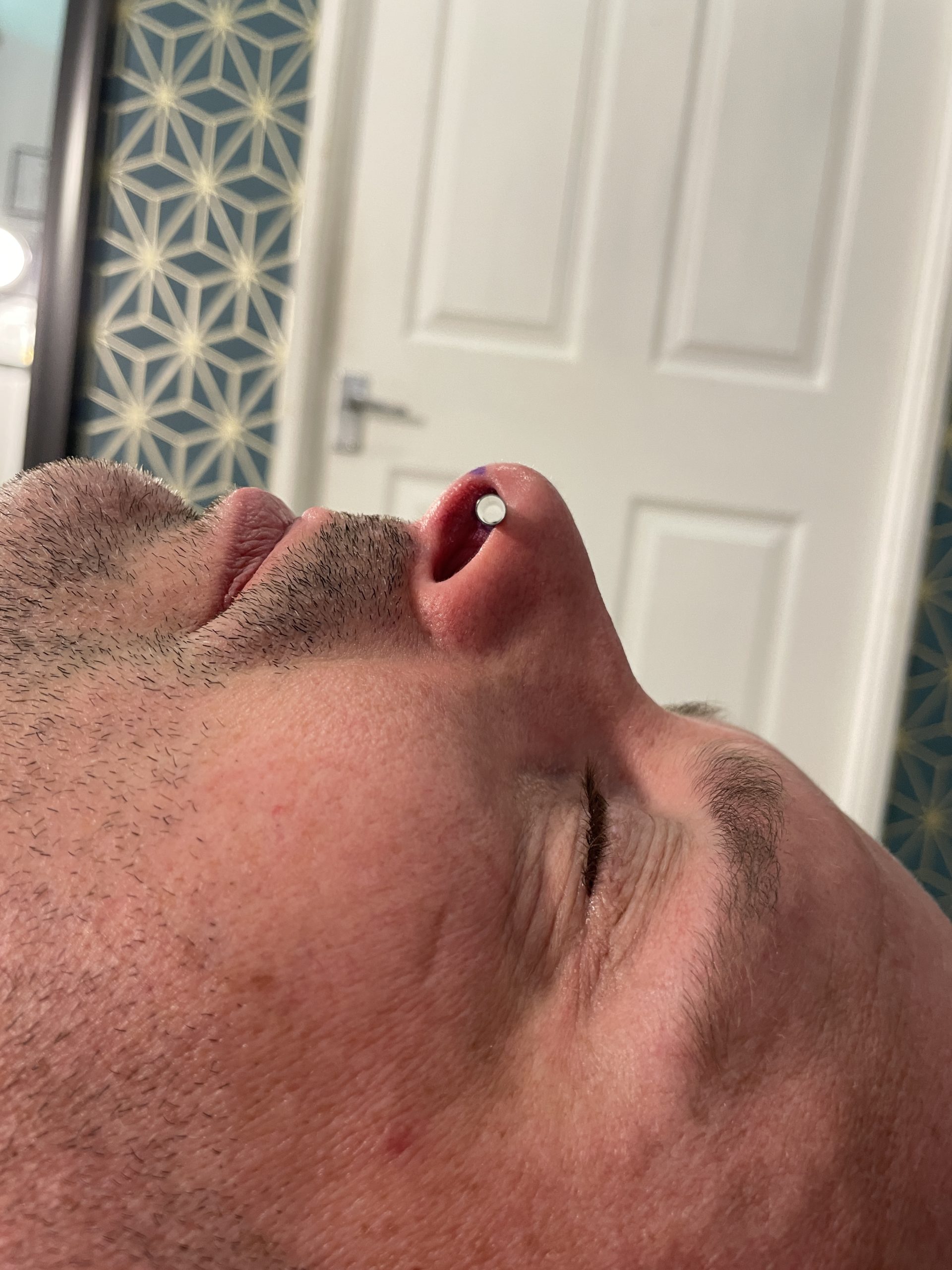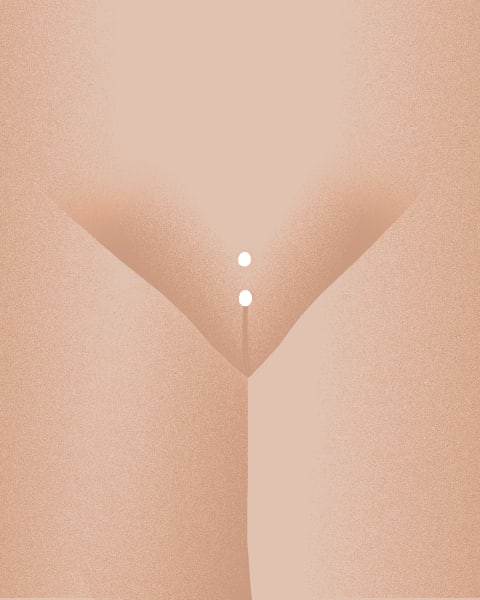I think one of the most common questions we get, aside from ‘How much is a piercing?’ is… ‘Can you numb it?’ Piercing numbing is a common query.
It’s a fair question. Especially for those inexperienced with piercings, it might feel like a daunting experience! It’s completely understandable that you would want to make it as pain-free as possible. But what kind of piercing numbing is available? And why are they unsafe?
The History of Anaesthetics
Since the dawn of time, for as long as human beings have experienced pain, we have been looking for ways to avoid it. The ancient Babylonians may have been using anaesthetics up to 4,000 years ago. The earliest accounts of anaesthetics pop up in the early 1200s, where physicians would use sponges soaked in opium to relieve the pain of surgery. However, the first general anaesthesia was not implemented in a surgery until October, 1846!
Piercing numbing creams did not become popular in the tattoo and piercing scene until the late 90s and very early 2000s, with the rise of Emla cream. That means that piercing anaesthetic is still very much in it’s infancy.

Anaesthetics and the Law
It’s very important to stress that piercers are not licensed or insured to provide any anaesthetics, including piercing numbing creams. Numbing creams are licensed, prescription-only medications that require a special license in order to use. Tattooists and piercers who are administering numbing creams to their clients are committing a crime, which can result in fines, jail time, and loss of license.
The administration of local anaesthetic injections by persons other than medically qualified practitioners (doctor/dentist) is illegal, and therefore not permitted. External application of topical anaesthetics (creams/gels/sprays) to clients can be deemed an offence under the Medicines Act 1968. The legislation stipulates that only persons who hold a product licence (generally pharmacists) may supply these products for use in medical applications. Their administration by Body Piercers, Tattooists or Therapists on clients for cosmetic purposes can therefore be deemed an offence.
– Gov.uk
Even with consent from the client, you are reminded that the use of any anaesthetic, be it by oral, injection or topical application, may leave the user open to prosecution under the Medicines Act 1968 or Health & Safety at Work Act 1974.
Piercing Anaesthetics – How Do They Work?
The most common ingredients in numbing creams are lidocaine, benzocaine and prilocaine. These are active ingredients that work by blocking Na+ (Sodium ion) and K+ (Potassium ion) channels in your nerves, preventing them from firing properly. This nerve effect can cause lidocaine toxicity when improperly used – For example, by an unlicensed piercer. Symptoms of lidocaine toxicity include:
- Heart Palpitations
- Hypotension
- Dizziness
- Shaking and tremors
- Nausea
Of course, lidocaine toxicity from a piercing would be quite rare, however…
Lidocaine and it’s derivitives are common allergens. 2.5% of people may experience anaphylaxis from the introduction of lidocaine to their bloodstream – And you may not know about this allergy until it is too late.
Aside from anaphylaxis, allergic contact dermatitis and skin irritation are very common. This means that you may experience an angry rash, itching, or bleeding after applying a numbing cream. This can be exacerbated if numbing cream comes into contact with broken skin, such as a body piercing.
Freeze Sprays – A Bad Alternative
Another popular, and equally terrible, piercing numbing option are ‘freeze sprays.’ These are unlicensed, meaning that anyone can use them and it is not classed as an offence. You have probably seen them in youtube videos or instagram reels – They look like they are spraying deodorant onto the piercing spot.
Freeze Sprays work by spraying a liquified gas or chemical onto the skin – This is often ethyl chloride. As the gas evaporates, it rapidly cools the skin until the nerves are no longer able to fire properly. This gives a temporary numbness to the top layer of skin.
These sprays, although legal, are highly problematic. The freezing action can toughen the skin, causing excessive trauma to the piercing site. Secondly, if used on or near mucousal membranes, it can severely damage the skin. Finally, and most importantly, freeze sprays can (and do) cause chemical burns and tissue necrosis. Freeze sprays are unregulated and often used by piercers who have no idea what they are doing. This means that misuse is criminally common.
- The product itself is not sterile and can therefore potentially cause an infection.
- To have a good numbing effect, the spray must be applied in quite high doses to reach the nerve fibres below the skin. This presents the likelihood of burns being caused to the skin, particularly in cases of smokers and diabetics, which opens the way for infection.
- The product has been shown to be a respiratory irritant, particularly when used on or near the face.
- The product is highly flammable and must therefore be considered carefully in terms of health & safety during usage, storage etc.
We will attach an image below, taken at Rogue, of a navel piercing that we unfortunately had to remove due to a severe chemical burn from a freeze spray. This was of course not pierced at Rogue.

This client, who has given permission for this image to be shared, had to have their navel piercing removed by ourselves. This piercing was only 6 weeks old, but you can still see the scarring and damaged skin surrounding the navel that was caused by a freeze spray. This is a classic result of a chemical burn caused by a freeze spray. We hope that this piercing will heal, this scar will fade, and next year we will be able to give them the beautiful navel piercing they deserve!
…Do They Even Work?
Ironically, even if you do take the risk and apply a numbing cream before a piercing without your piercers knowledge (we do not recommend doing this!!), you would hope that your risk would pay off by giving you the painless piercing you want. You may be disappointed in the results, as numbing creams are ineffective at numbing piercings! Why is this? It is because lidocaine can only act where it is applied, aka the thinnest surface layer of the skin. This means you may only get numbness for the first 0.00001 seconds of a piercing before we are piercing non-numbed skin!
What Should You Do Instead?
There are so many non-anaesthetic options for minimising the discomfort of a piercing.
Accept It.
To a certain extent, we can minimise the pain of a piercing through technique. We minimise the use of tools or clamps, we import the highest quality teflon-coated needles, and pierce using a smooth and gentle technique. That being said, all piercings naturally come with a certain level of discomfort. We are piercing you, after all.
Self Care
If you are stressed, tired, hungry, hungover, or generally not feeling your best, then a piercing is going to feel more uncomfortable. The best way to have the best experience is to look after yourself! Treat your piercing like a medical procedure – Ensure you are well-fed, hydrated, and coming in after a good nights rest. You will be amazed how much basic self-care can make a piercing more manageable.
Breathe It Out.
We are not a hippy studio. We don’t normally subscribe to breathing techniques! However, there is scientific evidence that slow, deep breathing can help patients with acute pain. A total of 11,968 studies were screened in this review, showing that deep breathing techniques significantly lowered pain scores. That is not to be sniffed at! This effect is called Respiratory Hypoalgesia. The baroreceptor system (The sensing system that includes the lungs) detects changes in blood pressure and heart rate during the respiratory cycle. Deep breathing changes the signals that are relayed to the brain by the vagus nerve, which then provides an analgesic effect through the parasympathetic nervous system.
At Rogue, we practice deep breathing techniques before, during, and after the piercing. As a piercee as well as piercers, we can absolutely tell the difference. It is magical.

Conclusions
So there you have it! Anaesthetics may sound like an excellent option, however they are unsafe and ineffective. Please never apply numbing creams without your piercers knowledge, and never attend a piercing studio that offers numbing as they are breaking the law.
Stay safe, stay healthy!
If you have any questions, please drop us an email or instagram message! Keep an eye on our blog as we post a new one every single Friday!







































